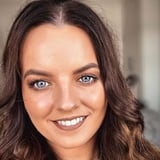Summary
The design industry’s relationship to the field of business has long been established and continues to become further entangled each year. But designers aren’t just satisfied with only disrupting the business sector—they’re keen to disrupt the social sector too. Unfortunately, the weaknesses baked into the discipline of design (that have been present from the start) are readily exposed when designers enter complex social issues and treat them like any other human-centered innovation challenge. The lack of a moral framework, let alone a set of ethical guidelines, put designers at great risk of doing more harm than good.
Key Insights
-
•
Human-centered design can be weaponized to exploit users, as seen in the founding of Jewel Labs.
-
•
The design industry largely relies on individual designers’ personal ethics (BYOE), lacking a shared ethical framework.
-
•
Dieter Rams’ principles of good design focus on function and honesty but do not prevent ethically harmful products.
-
•
Power asymmetry is embedded in most design projects, with designers often lacking influence compared to powerful clients.
-
•
Greater Good Studio practices 'breaking up' with projects to avoid causing harm, a rare and vital practice in the industry.
-
•
Saying no to projects requires cultivation and support, as designers are typically trained to always say yes.
-
•
Design primarily serves to build capital and provide comfort, which attracts powerful stakeholders and can accelerate harm.
-
•
There is widespread unacknowledged workplace trauma and ethical conflict within design teams.
-
•
An ethical design framework could include codes of ethics, accreditation, licensing, and community feedback mechanisms.
-
•
The design industry risks bifurcation into accountable designers serving demanding clients and an unaccountable majority.
Notable Quotes
"Good design is honest and yes, the Jewel e-cigarette will honestly kill you."
"What is design’s relationship to power and privilege? Which humans do we center when we say human-centered design?"
"Power is the ability to change another person’s reality."
"The most common way people give up their power is by thinking they don’t have any."
"We mostly have something called a BYOE scenario or bring your own ethics."
"Not every project needs to be responded to; not every RFP needs a proposal."
"Every major brand has a dark side brought to you by design on purpose, 40 hours a week."
"Design helps build capital and seek comfort, which draws in the most powerful."
"Why do designers decide how to design this? How do we wean design's addiction from whiteness?"
"Saying no shouldn’t be about being difficult but about accountability beyond any one person."
Or choose a question:
















More Videos

"Design thinking is for everybody. It’s collaborative, inclusive, and cross-disciplinary."
Doug PowellClosing Keynote: Design at Scale
November 8, 2018

"Middle schoolers might ask you tough questions about release forms and how their data will be used."
Mila Kuznetsova Lucy DentonHow Lessons Learned from Our Youngest Users Can Help Us Evolve our Practices
March 9, 2022

"The mayor wanted to shrink the neighborly bonds that the city was known for by investing in a 2030 living Monument of collaboration and community."
Sarah GallimoreInspire Progress with Artifacts from the Future
November 18, 2022

"Operations tends to be something companies only think about when they are scaling rapidly, but investing early is essential."
Lada Gorlenko Sharbani Dhar Sébastien Malo Rob Mitzel Ivana Ng Michal Anne RogondinoTheme 1: Discussion
January 8, 2024

"Who deals with chaos, ambiguity, and disruption best? It’s us, design operations humans."
Alnie FigueroaThe Future of Design Operations: Transforming Our Craft
September 10, 2025

"Mixed methods research, combining qualitative and quantitative, gives the fullest understanding of customer experience."
Landon BarnesAre My Research Findings Actually Meaningful?
March 10, 2022

"It’s the worst thing when someone feels dumb in front of a customer because the tools don’t support them."
Emily EagleCan't Rewind: Radio and Retail
June 3, 2019

"Managing resistance is mental; customers might resist because they've learned workarounds with legacy systems."
Malini RaoLessons Learned from a 4-year Product Re-platforming Journey
June 9, 2021

"At General Assembly, I learned that product management is focused more on outcomes and iterative discovery."
Asia HoePartnering with Product: A Journey from Junior to Senior Design
November 29, 2023
Latest Books All books
Dig deeper with the Rosenbot
What practical practices can make accessibility a sustainable part of daily design and development workflows?
How can teams ensure their design and research tools support accessibility and inclusion?
How can visualization techniques demonstrate the measurable impact of behind-the-scenes service design work?
















